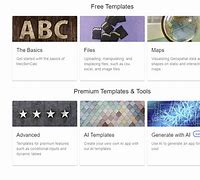
Okay, here’s your SEO friendly intro:
Creating Your First App: A Beginner’s Comprehensive Guide
Have you ever had a brilliant idea for an app that could revolutionize the way people do something, or solve a problem that’s been bugging you? Well, you’re not alone! Tons of people have great app ideas, but getting them off the ground can seem like a daunting task. You might be thinking: “Where do I even begin?” or “Do I need to be a coding whiz?”
Fear not, aspiring app developer! This guide is your ultimate roadmap for creating your first app, no matter your skill level. We’ll break down every step from conception to launch, using clear & simple language that’s friendly for even complete beginners.
Ready to take the leap into the exciting world of app development? Here’s what we’ll cover in this guide:
Related Post : Telegram gives explanation after their boss was arrested in France
1. Defining Your App Idea: First things first, we’ll explore how to solidify your app concept. Think about what problem you’re trying to solve, what features you need, & who your target audience is.
2. Choosing The Right Platform: Whether you’re going for Android, iOS, or a hybrid approach, we’ll guide you through selecting the platform that’s best for your app.
3. Learning The Basics of App Development: You don’t need to be a seasoned developer to get started. We’ll equip you with the fundamentals of coding and app design using user-friendly resources.
4. Building Your App: Now comes the exciting part, actually creating your app! We’ll dive into tools like coding languages & frameworks to make it a reality.
5. Testing & Refining: It’s crucial to test your app rigorously before launching it to the world. We’ll walk you through different types of testing and provide tips for making improvements.
6. Publishing Your App: Finally, the time comes to unveil your masterpiece to the world! We’ll discuss app stores, monetization options, & essential steps for making your app stand out.
Whether you’re driven by passion, innovation, or simply wanting to add a new skill to your arsenal, this guide will equip you with the knowledge, resources, and confidence to launch your first amazing app. So buckle up, it’s time to turn that app idea into a reality!
Creating Your First App: A Beginner’s thorough Guide
The world of app development can seem intimidating, but it’s an exciting journey that opens doors to a vast digital landscape. This thorough guide will equip you with the knowledge and tools to create your first app, from ideation to launch.
What is App Development?
App development is the process of creating software applications designed for mobile devices, such as smartphones and tablets. It involves various stages, from ideaualizing the idea to coding, testing, and launching the app on app stores.
What is an app?
An app, short for “application,” is a software program designed for a specific purpose. It can be anything from a game or social media platform to a productivity tool or educational resource. Apps are designed to be user-friendly and accessible, offering a seamless experience on mobile devices.
Why are apps so popular?
Apps have become ubiquitous in our lives, providing convenience, entertainment, and information at our fingertips. Their popularity stems from several factors:
- Accessibility: Apps are easily accessible on mobile devices, which are always with us.
- User-friendliness: Apps are designed to be intuitive and easy to use, even for those without technical expertise.
- Personalization: Apps offer personalized experiences, tailoring text and attributes to individual users.
- functionality: Apps can perform a wide scope of tasks, from playing games to ordering food.
What are the varied types of apps?
Apps can be categorized into varied types based on their purpose and functionality. Some common types include:
- Utility apps: Apps that offer practical services, such as calendars, calculators, and note-taking tools.
- Entertainment apps: Apps designed for leisure, such as games, music players, and streaming services.
- Social media apps: Apps that connect people, such as Facebook, Instagram, and Twitter.
- Productivity apps: Apps that help users be more efficient, such as to-do list apps, project management tools, and email clients.
- Educational apps: Apps that offer learning text, such as language learning apps, educational games, and reference materials.
What are the benefits of creating an app?
Creating an app offers numerous benefits, including:
- Solve a problem: Develop an app that addresses a need or solves a pain point for a specific target audience.
- Generate revenue: Monetize your app through advertising, in-app purchases, or paid accesss.
- Build a brand: Create a unique app that showcases your creativity and expertise.
- Reach a global audience: Distribute your app through app stores, making it available to users worldwide.
- Learn valuable skills: Gain hands-on experience in app development, coding, and mobile technology.
Getting Started with App Development
Now that you understand the basics, let’s dive into the steps involved in creating your first app.
Choosing Your App Idea
The foundation of any achievementful app is a compelling idea. Start by brainstorming ideas that:
- Solve a problem: determine a common problem or need that your app can address.
- Are unique: Offer something new and innovative that sets your app apart.
- Have a industry: Ensure there’s a potential audience for your app.
Defining Your Target Audience
Knowing your target audience is crucial for designing and industrying your app effectively. Consider:
- Demographics: Age, gender, location, income level, and interests.
- Psychographics: Values, beliefs, lifestyles, and motivations.
- Needs and Pain Points: What are their challenges and how can your app solve them?
Conducting industry study
Once you have an app idea and target audience in mind, it’s essential to validate your idea through industry study. This involves:
- Competitor examination: Analyze existing apps in your niche to determine their strengths and weaknesses.
- User Feedback: Gather feedback from potential users to understand their preferences and needs.
- industry Trends: study current trends and emerging technologies that could impact your app.
Creating a Business Plan
A business plan is a roadmap for your app’s achievement. It should outline:
- Executive Summary: Briefly describe your app and its value proposition.
- industry examination: Analyze your target audience, competitors, and industry trends.
- industrying Plan: Define your industrying plan, including your target audience, channels, and budget.
- Financial Projections: Forecast your revenue, expenses, and profitability.
Choosing the Right App Development Platform
There are several app development platforms available, each with its own strengths and weaknesses.
Native App Development
Native apps are developed specifically for a particular operating system, such as Android or iOS. They offer the optimal performance and access to device-specific attributes.
- Android App Development: Use languages like Java or Kotlin to create apps for Android devices.
- iOS App Development: Use Swift or Objective-C to develop apps for iPhones and iPads.
Cross-Platform App Development
Cross-platform apps are built using a single codebase that can be deployed across multiple platforms. This approach reduces development time and costs.
- React Native: Developed by Facebook, React Native uses JavaScript to build apps that run on both Android and iOS.
- Flutter: Developed by Google, Flutter uses Dart to create high-performance, visually appealing apps.
Web App Development
Web apps are built using web technologies like HTML, CSS, and JavaScript. They are accessed through a web browser and are platform-independent.
Hybrid App Development
Hybrid apps combine elements of native and web apps. They are developed using web technologies but packaged within a native app shell.
Designing Your App
A well-designed app is intuitive, engaging, and user-friendly. The design process involves:
User Interface (UI) Design
UI design focuses on the visual elements of your app, including:
- Color scheme: select colors that are visually appealing and reflect your brand.
- Typography: select fonts that are legible and enhance the overall design.
- Layout: Organize elements on the screen for easy navigation and readability.
- Icons and Graphics: Use icons and images that are pertinent and enhance the user experience.
User Experience (UX) Design
UX design focuses on the user’s journey and interaction with your app:
- User Flow: Define the steps users take to achieve specific objectives within your app.
- Navigation: Create a clear and intuitive navigation structure.
- Information Architecture: Organize text and attributes logically for easy access.
- Accessibility: Ensure your app is accessible to users with disabilities.
Prototyping and Wireframing
Before you start coding, it’s essential to create prototypes and wireframes:
- Prototyping: Create interactive mockups of your app to test usability and gather feedback.
- Wireframing: Sketch out the basic layout and structure of your app’s screens.
Building Your App
Now it’s time to turn your design into a functional app.
Coding Your App
This step involves writing code to implement the functionality and attributes of your app:
- Learning a Programming Language: select a programming language that aligns with your chosen development platform (Java, Kotlin, Swift, Objective-C, JavaScript, Dart).
- Choosing an IDE: select an integrated development environment (IDE) that offers tools for writing, testing, and debugging code.
- Writing Code: Use your chosen programming language to write the code that defines your app’s logic and behavior.
Testing Your App
Testing is essential to ensure your app is bug-complimentary, stable, and performs as expected:
- Unit Testing: Test individual components of your app to ensure they function correctly.
- Integration Testing: Test how varied components of your app work together.
- User Acceptance Testing (UAT): Get feedback from users to determine any usability issues.
Debugging Your App
Debugging involves finding and fixing errors in your code:
- Use Debugging Tools: Utilize IDE debugging attributes or external tools to determine and resolve issues.
- Read Error Messages: Carefully analyze error messages to pinpoint the root cause of the problem.
- Consult Documentation and Online Resources: Seek help from online forums, documentation, or community resources.
Launching Your App
After testing and debugging, you’re ready to launch your app.
Choosing an App Store
select the app store(s) where you want to distribute your app:
- Google Play Store: For Android devices.
- Apple App Store: For iOS devices.
Creating an App Store Listing
Develop a compelling app store listing that attracts users:
- App Icon: Create a visually appealing icon that represents your app.
- App Name: select a descriptive and memorable name.
- App Description: Write a clear and concise description that highlights your app’s key attributes and benefits.
- Screenshots and Videos: Showcase your app’s functionality and user experience.
Pricing Your App
Decide on a pricing plan:
- complimentary: Offer your app for complimentary, generating revenue through advertising or in-app purchases.
- paid access-based: Charge a fixed price for your app.
- complimentarymium: Offer a complimentary version with limited attributes and a paid access-based version with premium attributes.
industrying Your App
Promote your app to reach your target audience:
- App Store Optimization (ASO): maximize your app store listing to improve visibility and downloads.
- Social Media industrying: Share your app on social media platforms.
- text industrying: Create blog posts, articles, and other text promoting your app.
- paid access-based Advertising: Utilize ad networks to reach a wider audience.
Conclusion
Creating your first app is a rewarding experience that opens doors to a world of possibilities. By following this guide, you’ll have the knowledge and tools to turn your app idea into reality. Remember, app development is an ongoing process, so be prepared to iterate, learn, and adapt as you navigate this exciting journey.



